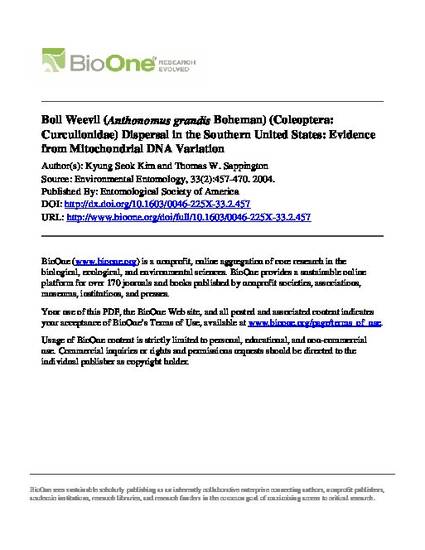
An understanding of boll weevil (Anthonomus grandis Boheman) dispersal behavior is essential to characterizing and responding to the threat of migration into eradication zones. Genetic variation in boll weevil mitochondrial DNA (mtDNA) was sampled and analyzed to make inferences on the magnitude and geographic pattern of genetic differentiation among weevil populations from 20 locations across eight U.S. states and northeast Mexico. Polymerase chain reaction (PCR)-restriction fragment length polymorphisms (RFLPs) analysis was conducted on a 12.4-kb amplicon of mtDNA from each of 419 individuals. A total of 28 distinct mtDNA haplotypes, 17 of which were unique to single locations, were identified from restriction reactions of 10 informative endonucleases. Haplotype and nucleotide diversity was generally greater in southern than northern populations and was greater in the east than the west among northern populations. Genetic differentiation between eastern and western populations was pronounced, and phylogenetic analyses revealed two major clades corresponding to these regions. These results are consistent with historical boll weevil range expansion into the southeastern United States from Mexico and a secondary colonization of the High Plains. Evidence suggests that gene flow is limited between eastern and western populations but is relatively high among populations within the eastern region. In addition, estimates of gene flow indicate that migration between locations separated by <300 km is frequent.
Available at: http://works.bepress.com/thomas_sappington/4/

This article is from Environmental Entomology 33 (2004): 457, doi:10.1603/0046-225X-33.2.457.